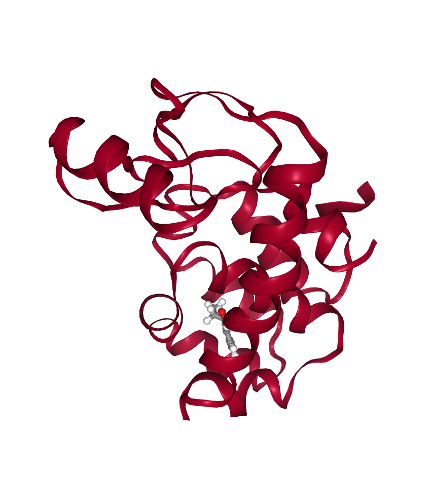BioExcel Building Blocks workflows
In this page, users can find a list of all available BioExcel Building Blocks workflows. Each workflow has its own set of WorkflowHub flavours (Jupyter Notebook, CWL, pure Python and Galaxy), along with a set of links for launching it. Links to documentation and GitHub repository are provided as well.
They can also be found in a GitHub repository in all their versions with all the instructions and sample files needed for executing them at home in the users' own premises.
Have you built a workflow with BioBB and do you want to contribute? We have a specific repository for this purpose. Visit BioBB community workflows and follow the instructions.
Please be sure to use a recent conda version before installing and running our workflows. Keeping your conda outdated can lead to odd behaviors and incompatibilities, and consequently, resulting in having to install more dependencies than the provided in the repository.
Please help us to improve the BioExcel Building Blocks by filling in our 2025 survey.

This tutorial aims to illustrate the process of setting up a simulation system containing a protein, step by step, using the BioExcel Building Blocks library (biobb). The particular example used is the Lysozyme protein (PDB code 1AKI).

This tutorial aims to illustrate the process of ligand parameterization for a small molecule, step by step, using the BioExcel Building Blocks library (biobb). The particular example used is the Ibuprofen small compound (3-letter code IBP, Drugbank code DB01050), a non-steroidal anti-inflammatory drug (NSAID) derived from propionic acid and it is considered the first of the propionics.

This tutorial aims to illustrate the process of setting up a simulation system containing a protein in complex with a ligand, step by step, using the BioExcel Building Blocks library (biobb). The particular example used is the T4 lysozyme L99A/M102Q protein (PDB code 3HTB), in complex with the 2-propylphenol small molecule (3-letter Code JZ4).

This tutorial aims to illustrate how to compute a fast-growth mutation free energy calculation, step by step, using the BioExcel Building Blocks library (biobb). The particular example used is the Staphylococcal nuclease protein (PDB code 1STN), a small, minimal protein, appropriate for a short tutorial.

This tutorial aims to illustrate the process of protein-ligand docking, step by step, using the BioExcel Building Blocks library (biobb). The particular example used is the Mitogen-activated protein kinase 14 (p38-α) protein (PDB code 3HEC), a well-known Protein Kinase enzyme, in complex with the FDA-approved Imatinib, (PDB Ligand code STI, DrugBank Ligand Code DB00619), a small molecule kinase inhibitor used to treat certain types of cancer.

This tutorial aims to illustrate the process of protein-ligand docking, step by step, using the BioExcel Building Blocks library (biobb). The particular example used is the Mitogen-activated protein kinase 14 (p38-α) protein (PDB code 3LFA), a well-known Protein Kinase enzyme, in complex with the FDA-approved Dasatinib, (PDB Ligand code 1N1, DrugBank Ligand Code DB01254), a small molecule kinase inhibitor used for the treatment of lymphoblastic or chronic myeloid leukemia with resistance or intolerance to prior therapy.

This tutorial aims to illustrate the process of protein-ligand docking, step by step, using the BioExcel Building Blocks library (biobb). The particular example used is the Mitogen-activated protein kinase 14 (p38-α) protein (PDB code 3HEC), a well-known Protein Kinase enzyme, in complex with the FDA-approved Imatinib, (PDB Ligand code STI, DrugBank Ligand Code DB00619), a small molecule kinase inhibitor used to treat certain types of cancer.

This tutorial aims to illustrate the process of computing classical molecular interaction potentials from protein structures, step by step.

This tutorial aims to illustrate the process of generating protein conformational ensembles from 3D structures and analysing its molecular flexibility, step by step, using the BioExcel Building Blocks library (biobb). Workflow included in the ELIXIR 3D-Bioinfo Implementation Study: Building on PDBe-KB to chart and characterize the conformation landscape of native proteins.

This tutorial aims to illustrate the process of generating protein conformational ensembles from 3D structures and analysing its molecular flexibility, step by step.

This tutorial aims to illustrate the process of computing a conformational transition between two known structural conformations of a protein, step by step.

This tutorial aims to illustrate the process of setting up a simulation system containing a protein, step by step, using the BioExcel Building Blocks library (biobb) wrapping the AmberTools utility from the AMBER package. The particular example used is the Lysozyme protein (PDB code 1AKI).

This tutorial aims to illustrate the process of setting up a simulation system containing a protein in complex with a ligand, step by step, using the BioExcel Building Blocks library (biobb) wrapping the AmberTools utility from the AMBER package. The particular example used is the T4 lysozyme protein (PDB code 3HTB) with two residue modifications L99A/M102Q complexed with the small ligand 2-propylphenol (3-letter code JZ4).

This tutorial aims to illustrate the process of setting up a simulation system to run constant pH Molecular Dynamics simulations with AMBER, step by step, using the BioExcel Building Blocks library (biobb) wrapping the AmberTools utility from the AMBER package. The particular example used is the Bovine Pancreatic Trypsin Inhibitor (BPTI) protein (PDB code 6PTI).

This BioExcel Building Blocks library (BioBB) workflow provides a pipeline to setup DNA structures for the Ascona B-DNA Consortium (ABC) members. It follows the work started with the NAFlex tool to offer a single, reproducible pipeline for structure preparation, ensuring reproducibility and coherence between all the members of the consortium.

This tutorial aims to illustrate the process of extracting structural and dynamical properties from a DNA MD trajectory helical parameters, step by step, using the BioExcel Building Blocks library (biobb). The particular example used is the Drew Dickerson Dodecamer sequence -CGCGAATTCGCG- (PDB code 1BNA). The trajectory used is a 500ns-long MD simulation taken from the BigNASim database (NAFlex_DDD_II entry).

This tutorial aims to illustrate the process of checking a molecular structure before using it as an input for a Molecular Dynamics simulation.

 Google Colab
Google Colab  BioBB Workflows
BioBB Workflows